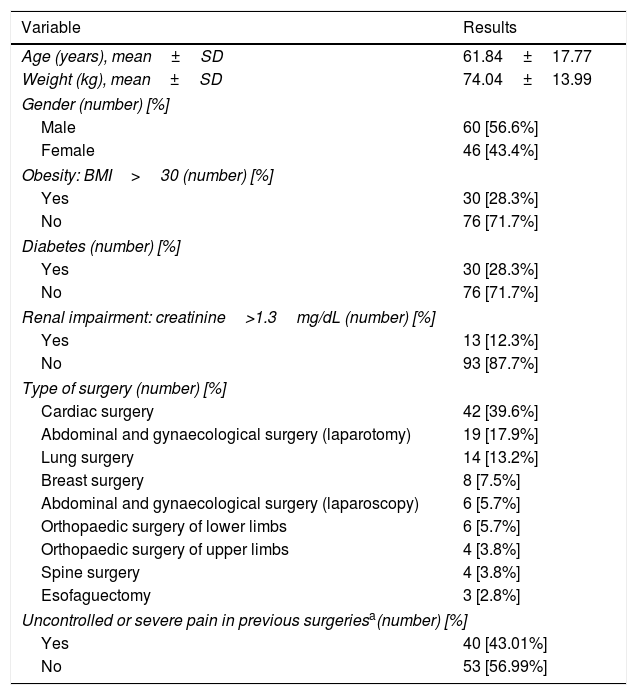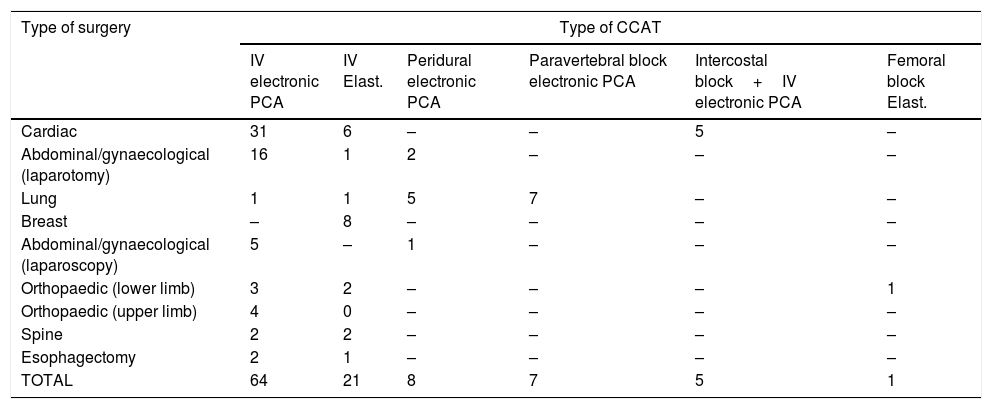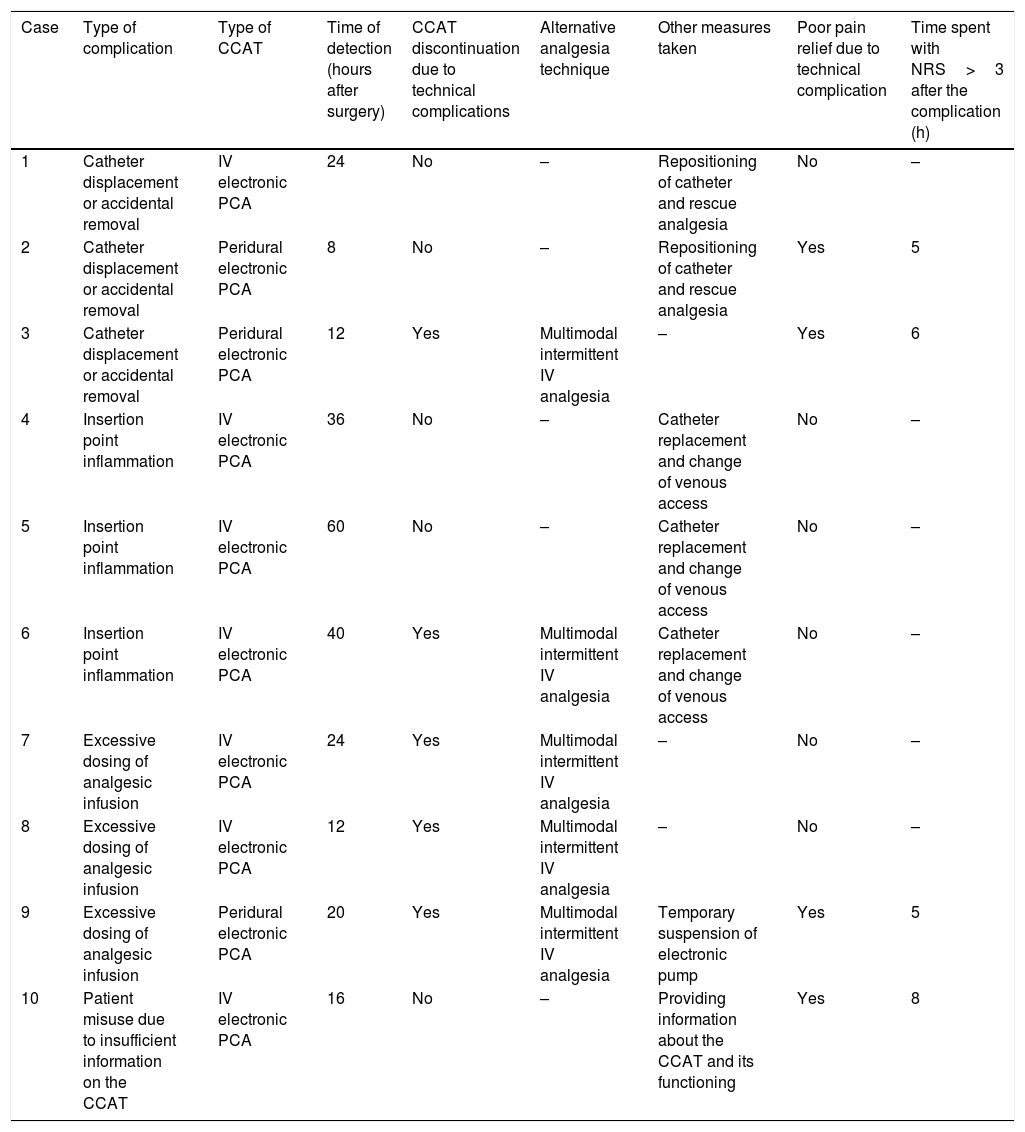Continuous invasive analgesia remains the gold-standard method for managing acute post-operative pain after major surgery. However, this procedure is not exempt from complications that may have detrimental effects on the patient and affect the post-operative recovery process. Data of the complications of continuous catheter analgesic techniques (CCATs) and their impact on pain relief are scarce in the literature.
Material and methodsWe conducted a prospective longitudinal study and patients who underwent a surgical procedure and received continuous invasive analgesia after surgery were included. Post-operative analgesic strategy, pain scores (NRS), CCAT's characteristics and technical complications were recorded. Patient satisfaction was determined. Descriptive statistics and Student's t-tests were applied for the comparative analyses.
ResultsWe collected data from 106 patients. Mean duration of the CCAT was 47.52±21.23h and 52 patients (49.1%) were controlled in conventional hospitalisation units whereas 54 patients (50.9%) were controlled on intensive or high-dependency care units.
The overall incidence of technical complications was 9.43%. The most common complications were catheter displacement (2.38%), inflammation at the IV catheter insertion point (2.38%) and excessive dosing of analgesic drugs (2.38%). Mean NRS scores were ≤3 during the permanence of CCATs. Maximum pain intensity was significantly higher in patients who suffered technical complications (mean±standard deviation [x¯± SD]: 4.4±2.8 vs. 2.9±1.9; p<0.05).
Satisfaction levels with the technique and overall satisfaction with the pain management strategy were negatively impacted by the occurrence of complications.
ConclusionsThe incidence of technical complications of CCATs was 9.43% and had a negative impact in pain control and patient's satisfaction.
La analgesia continua invasiva es el método de referencia para el manejo del dolor postoperatorio en cirugía mayor pero no está exenta de posibles complicaciones. Existe poca información sobre las complicaciones de las técnicas analgésicas continuas con catéter (TACC) y su impacto en el control del dolor.
Material y métodosDiseñamos un estudio prospectivo longitudinal incluyendo a pacientes tratados mediante cirugía que recibieron una TACC postoperatoria. Se registraron el tipo de analgesia, la intensidad del dolor mediante escala NRS, las características de las TACC, sus complicaciones técnicas y la satisfacción de los pacientes. Se aplicó estadística descriptiva y análisis comparativo mediante t de Student.
ResultadosSe registraron datos de 106 pacientes. La duración de las TACC fue 47,52 ± 21,23 h; 52 pacientes (49,1%) fueron controlados en hospitalización convencional y 54 (50,9%) en unidades de críticos o alta dependencia.
La tasa global de complicaciones técnicas fue del 9,43%. Las complicaciones más frecuentes fueron desplazamiento del catéter (2,38%), inflamación en el punto de inserción del catéter IV (2,38%) y dosificación excesiva de analgésicos (2,38%). El valor medio de NRS fue ≤ 3 durante la permanencia de la TACC. La intensidad máxima de dolor fue mayor en los pacientes con complicaciones técnicas (media ± desviación estándar [x̅ ± DE]: 4,4 ± 2,8 vs. 2,9 ± 1,9; p < 0,05).
La satisfacción con la comodidad de la técnica y la satisfacción global con el tratamiento del dolor se redujeron significativamente en presencia de complicaciones.
ConclusionesLa incidencia de complicaciones técnicas de las TACC fue del 9,43% y tuvieron un impacto negativo en el control del dolor postoperatorio y en la satisfacción de los pacientes.











